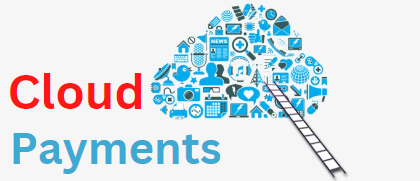How to Implement Cloud Payments in Your Business
In today’s digital age, businesses are constantly seeking ways to streamline their operations and improve efficiency. One area that has seen significant advancements is payment processing. Traditional payment methods, such as cash and checks, are being replaced by more modern and convenient options, including cloud payments. Cloud payments refer to the process of using cloud-based technology to facilitate and manage financial transactions.
This article will provide a comprehensive guide on how to implement cloud payments in your business, covering various aspects such as benefits, types of solutions, implementation steps, choosing the right provider, security and compliance, integration with existing processes, training and onboarding, overcoming challenges, and frequently asked questions.
Benefits of Implementing Cloud Payments in Your Business
Implementing cloud payments in your business can bring numerous benefits that can positively impact your operations and bottom line. One of the key advantages is increased efficiency. Cloud payment solutions automate many manual processes, reducing the need for manual data entry and reconciliation. This not only saves time but also minimizes the risk of human error. Additionally, cloud payments offer real-time transaction processing, allowing businesses to receive payments faster and improve cash flow.
Another significant benefit is enhanced customer experience. Cloud payment solutions provide customers with a seamless and convenient payment experience. With options such as mobile payments and online portals, customers can make payments anytime, anywhere, using their preferred method. This flexibility improves customer satisfaction and loyalty, ultimately leading to increased sales and repeat business.
Furthermore, cloud payments offer improved data management and analytics capabilities. By centralizing payment data in the cloud, businesses can easily access and analyze transaction information. This data can provide valuable insights into customer behavior, preferences, and trends, enabling businesses to make informed decisions and tailor their offerings accordingly. Additionally, cloud payment solutions often integrate with other business systems, such as customer relationship management (CRM) and accounting software, further enhancing data visibility and analysis.
Understanding the Different Types of Cloud Payment Solutions
Before implementing cloud payments in your business, it is essential to understand the different types of solutions available. The two main types of cloud payment solutions are payment gateways and payment service providers (PSPs).
Payment gateways act as a bridge between the merchant’s website or point-of-sale system and the payment processor. They securely transmit payment information, such as credit card details, to the payment processor for authorization and settlement. Payment gateways often offer additional features, such as fraud detection and prevention tools, recurring billing options, and multi-currency support.
On the other hand, payment service providers offer a more comprehensive solution that includes payment processing, data management, and reporting capabilities. PSPs handle the entire payment process, from authorization to settlement, and provide businesses with a range of features and services. These can include tokenization for secure storage of customer payment information, subscription management for recurring billing, and customizable payment forms to match the business’s branding.
Step-by-Step Guide to Implementing Cloud Payments in Your Business
Implementing cloud payments in your business requires careful planning and execution. Follow these steps to ensure a smooth and successful implementation:
- Assess your current payment processes: Start by evaluating your existing payment processes and identifying pain points or areas for improvement. This will help you determine the specific features and functionalities you need from a cloud payment solution.
- Define your requirements: Based on your assessment, create a list of requirements for your cloud payment solution. Consider factors such as payment methods supported, integration capabilities, security features, reporting and analytics, and scalability.
- Research and shortlist providers: Conduct thorough research to identify potential cloud payment providers that meet your requirements. Consider factors such as reputation, experience, customer reviews, and pricing models. Shortlist a few providers that seem to be the best fit for your business.
- Request proposals and demos: Reach out to the shortlisted providers and request detailed proposals that outline their offerings, pricing, and implementation process. Schedule demos to get a firsthand look at the user interface, features, and overall user experience.
- Evaluate and select a provider: Evaluate the proposals and demos based on your requirements and choose the provider that best aligns with your business needs. Consider factors such as ease of use, customer support, scalability, and integration capabilities.
- Plan the implementation: Once you have selected a provider, work closely with their implementation team to plan the implementation process. Define timelines, roles and responsibilities, and any necessary data migration or integration tasks.
- Configure and customize the solution: Collaborate with the provider’s implementation team to configure and customize the cloud payment solution according to your business requirements. This may involve setting up payment methods, integrating with other systems, and designing payment forms.
- Test and validate: Before going live, thoroughly test the cloud payment solution to ensure it functions as expected. Test various payment scenarios, perform end-to-end transaction tests, and validate the accuracy of reporting and analytics.
- Train your team: Provide comprehensive training to your team members who will be using the cloud payment solution. Ensure they understand how to process payments, access reports, and troubleshoot common issues. Consider providing ongoing training and support as needed.
- Go live and monitor: Once all testing and training are complete, it’s time to go live with the cloud payment solution. Monitor the system closely during the initial days to identify any issues or areas for improvement. Continuously monitor transaction data, reports, and customer feedback to optimize the payment process.
Choosing the Right Cloud Payment Provider for Your Business
Choosing the right cloud payment provider is crucial for a successful implementation. Consider the following factors when evaluating potential providers:
- Reputation and experience: Look for providers with a solid reputation and extensive experience in the payment industry. Check their track record, customer reviews, and industry certifications to ensure they are reliable and trustworthy.
- Security and compliance: Payment security is of utmost importance. Ensure that the provider follows industry best practices and complies with relevant security standards, such as Payment Card Industry Data Security Standard (PCI DSS) compliance. Inquire about their data encryption methods, tokenization capabilities, and fraud prevention measures.
- Integration capabilities: Assess the provider’s integration capabilities with your existing systems, such as your e-commerce platform, CRM, and accounting software. Seamless integration will ensure a smooth flow of data and minimize manual data entry.
- Scalability and flexibility: Consider your business’s growth plans and ensure that the provider can scale their solution to accommodate your future needs. Additionally, look for flexibility in terms of payment methods supported, customization options, and pricing models.
- Customer support: Evaluate the provider’s customer support offerings. Ensure they provide timely and responsive support, including phone, email, and live chat options. Check if they offer 24/7 support, especially if your business operates globally or outside regular business hours.
Ensuring Security and Compliance in Cloud Payment Systems
Security and compliance are critical considerations when implementing cloud payment systems. Here are some key measures to ensure the security and compliance of your cloud payment solution:
- Choose a PCI DSS compliant provider: PCI DSS compliance is a set of security standards that all businesses handling payment card data must adhere to. Ensure that your cloud payment provider is PCI DSS compliant and regularly undergoes audits to maintain compliance.
- Implement data encryption: Encryption is essential to protect sensitive payment data during transmission and storage. Ensure that your cloud payment solution uses strong encryption algorithms, such as AES (Advanced Encryption Standard), to safeguard data.
- Tokenization for secure data storage: Tokenization replaces sensitive payment data, such as credit card numbers, with unique tokens. These tokens are meaningless to hackers and can be safely stored in the cloud. Implement tokenization to minimize the risk of data breaches.
- Two-factor authentication: Implement two-factor authentication for accessing your cloud payment solution. This adds an extra layer of security by requiring users to provide a second form of verification, such as a unique code sent to their mobile device.
- Regularly update and patch systems: Keep your cloud payment solution and any associated systems up to date with the latest security patches and updates. Regularly review and apply security updates provided by your provider to protect against known vulnerabilities.
- Conduct regular security audits: Perform regular security audits to identify any potential vulnerabilities or weaknesses in your cloud payment system. Engage third-party security experts to conduct penetration testing and vulnerability assessments.
Integrating Cloud Payments with Your Existing Business Processes
Integrating cloud payments with your existing business processes is crucial for a seamless payment experience. Here are some key considerations for integration:
- E-commerce platform integration: If you operate an online store, ensure that your cloud payment solution integrates smoothly with your e-commerce platform. This integration should enable customers to make payments directly on your website, without being redirected to a third-party payment page.
- CRM integration: Integrate your cloud payment solution with your CRM system to streamline customer data management. This integration will allow you to track payment history, customer preferences, and other relevant information in one centralized location.
- Accounting software integration: Seamless integration with your accounting software is essential for accurate financial reporting and reconciliation. Ensure that your cloud payment solution can automatically sync transaction data with your accounting system, eliminating the need for manual data entry.
- Reporting and analytics integration: Consider integrating your cloud payment solution with reporting and analytics tools to gain deeper insights into your payment data. This integration will enable you to generate customized reports, track key performance indicators, and identify trends and patterns.
Training and Onboarding Your Team for Cloud Payment Adoption
Proper training and onboarding are crucial for the successful adoption of cloud payment solutions. Here are some key steps to ensure your team is well-prepared:
- Develop a training plan: Create a comprehensive training plan that covers all aspects of using the cloud payment solution. Identify the key features and functionalities that your team needs to be familiar with and outline the training modules accordingly.
- Provide initial training sessions: Conduct initial training sessions to introduce your team to the cloud payment solution. Cover topics such as processing payments, accessing reports, handling refunds, and troubleshooting common issues. Use a combination of presentations, demonstrations, and hands-on practice to ensure understanding.
- Offer ongoing training and support: Provide ongoing training and support to address any questions or issues that may arise after the initial training. Consider offering refresher courses, hosting webinars, or providing access to a knowledge base or support portal.
- Assign superusers or champions: Identify team members who can serve as superusers or champions for the cloud payment solution. These individuals should have in-depth knowledge of the system and be available to assist their colleagues with any questions or concerns.
- Encourage feedback and continuous improvement: Create a culture of feedback and continuous improvement. Encourage your team to provide feedback on the usability and effectiveness of the cloud payment solution. Regularly review and incorporate their suggestions to optimize the payment process.
Overcoming Challenges and Common Pitfalls in Cloud Payment Implementation
Implementing cloud payments in your business may come with its fair share of challenges. Here are some common pitfalls to be aware of and strategies to overcome them:
- Resistance to change: Resistance to change is a common challenge when implementing new technologies. To overcome this, clearly communicate the benefits of cloud payments to your team and involve them in the decision-making process. Address any concerns or misconceptions and provide ongoing support and training.
- Integration complexities: Integrating cloud payment solutions with existing systems can be complex. To mitigate this challenge, thoroughly assess the integration capabilities of potential providers before making a decision. Involve your IT team or external experts to ensure a smooth integration process.
- Data security concerns: Data security is a top concern when it comes to cloud payments. To address this, choose a reputable provider that follows industry best practices and complies with relevant security standards. Implement strong encryption, tokenization, and two-factor authentication to protect sensitive data.
- Scalability limitations: Scalability is crucial for businesses with growth plans. Ensure that your chosen cloud payment solution can scale to accommodate increased transaction volumes and support additional payment methods. Regularly review and assess the scalability options provided by your provider.
- Lack of ongoing support: Lack of ongoing support can hinder the successful implementation of cloud payments. Choose a provider that offers comprehensive customer support, including timely responses to queries and issues. Consider opting for a provider with 24/7 support, especially if your business operates globally.
Frequently Asked Questions (FAQs) about Cloud Payments in Business
Q.1: What is the difference between a payment gateway and a payment service provider?
A payment gateway acts as a bridge between the merchant’s website or point-of-sale system and the payment processor. It securely transmits payment information for authorization and settlement. On the other hand, a payment service provider offers a more comprehensive solution that includes payment processing, data management, and reporting capabilities.
Q.2: How can cloud payments improve cash flow for businesses?
Cloud payments offer real-time transaction processing, allowing businesses to receive payments faster. This improves cash flow by reducing the time between the sale and the receipt of funds. Additionally, cloud payment solutions automate many manual processes, saving time and reducing the risk of errors that can impact cash flow.
Q.3: Are cloud payments secure?
Cloud payments can be secure if proper security measures are implemented. It is crucial to choose a reputable provider that follows industry best practices and complies with relevant security standards, such as PCI DSS. Implementing data encryption, tokenization, and two-factor authentication further enhances security.
Q.4: Can cloud payment solutions integrate with existing business systems?
Yes, cloud payment solutions can integrate with existing business systems, such as e-commerce platforms, CRM, and accounting software. Seamless integration allows for a smooth flow of data and eliminates the need for manual data entry. It also enhances reporting and analytics capabilities by centralizing data.
Q.5: How can businesses ensure compliance with payment industry regulations?
To ensure compliance with payment industry regulations, businesses should choose a cloud payment provider that is PCI DSS compliant. Regularly review and apply security updates provided by the provider. Conduct regular security audits, engage third-party experts for penetration testing, and stay updated on the latest industry regulations.
Conclusion
Implementing cloud payments in your business can bring numerous benefits, including increased efficiency, enhanced customer experience, improved data management, and streamlined financial processes. By understanding the different types of cloud payment solutions, following a step-by-step implementation guide, choosing the right provider, ensuring security and compliance, integrating with existing processes, and providing comprehensive training, businesses can successfully adopt cloud payments.
Overcoming challenges and pitfalls, such as resistance to change and integration complexities, requires careful planning and ongoing support. By considering these factors and addressing common concerns, businesses can leverage cloud payments to optimize their payment processes and drive growth in the digital era.











